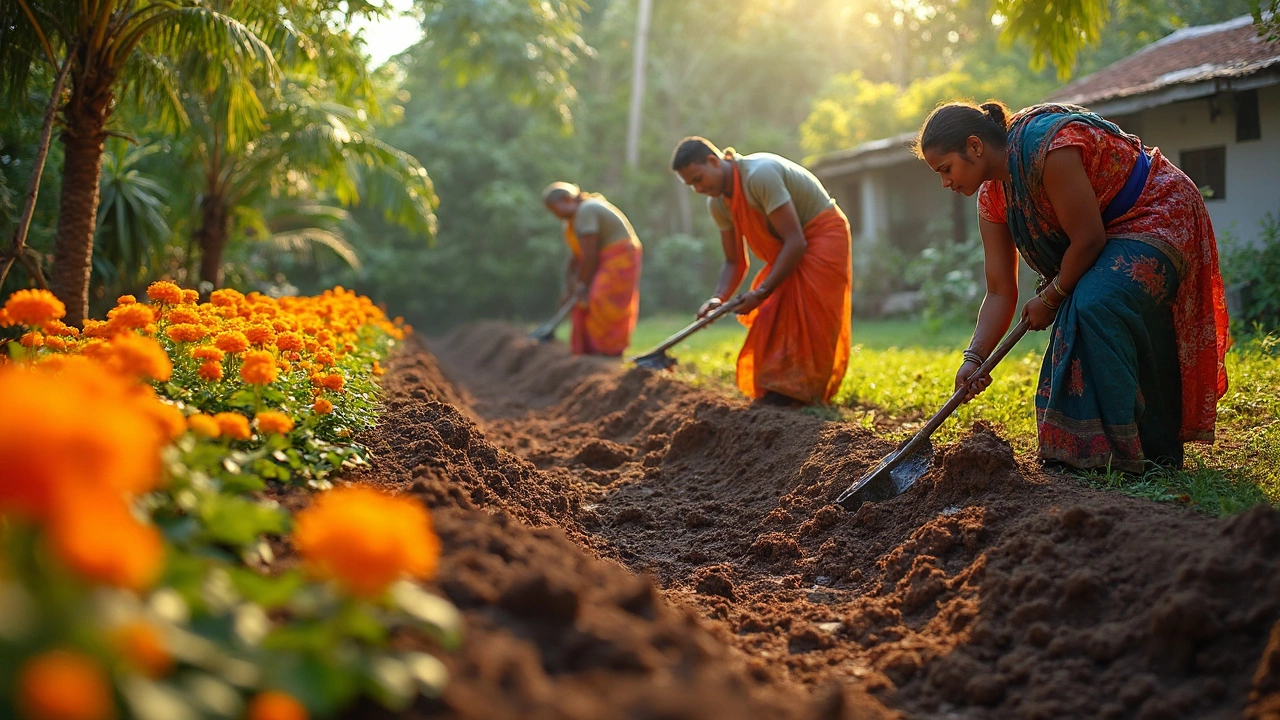Curious about which tool can help you remove the top layer of soil fast, safely, and efficiently? This guide digs deep into the best tools for stripping away topsoil, from manual spades to modern machines. Explore pro tips, clever techniques, and real-world examples from gardens and construction sites. Learn which tool might save you hours of work—or give you a new appreciation for a classic shovel. Get the information you need to pick the right soil removal tool for your project.
Topsoil Stripping: What It Is, Why It Matters, and How It Affects Your Garden
When you hear topsoil stripping, the removal of the uppermost, nutrient-rich layer of soil during construction or farming. It's also known as soil removal, and it’s one of the most silent killers of garden health and farm productivity. This isn’t just about losing dirt—it’s about losing the living, breathing foundation that lets plants grow strong. In India, where monsoons and dry spells alternate, topsoil is especially precious. It holds moisture, feeds roots, and hosts the microbes that turn dead leaves into plant food. Strip it away, and even the toughest plants struggle.
Topsoil stripping often happens during road building, housing projects, or even large-scale farming that clears land without care. But it doesn’t need to be big to hurt. Even a small garden plot can suffer if the top 4 to 6 inches of soil are removed or compacted. Once gone, it takes decades—sometimes over 500 years—to rebuild naturally. You can’t just buy it at the store and dump it in. Real topsoil isn’t just dirt; it’s a complex mix of organic matter, minerals, fungi, and tiny creatures that work together. Without it, your compost won’t break down right, your drip irrigation won’t reach roots effectively, and your plants will show stress even with perfect watering.
Related to this is soil erosion, the process where wind or water carries away topsoil. It’s a direct result of stripping. When you remove the protective layer, rain washes away what’s left. That’s why many gardeners in India who’ve lost topsoil end up with hard, clay-like ground that won’t absorb water. It’s the same reason why garden soil health, the condition of soil that supports plant growth through structure, nutrients, and biology becomes a daily battle. You can add compost, perlite, or leaf mold—but if the base is gone, you’re just patching a leaky roof.
There’s a reason posts here talk about loosening dense soil, fixing drainage, and making compost from kitchen scraps. You’re fighting the same war: rebuilding what was lost. Topsoil stripping isn’t always obvious. Sometimes it’s from foot traffic, sometimes from heavy machinery, sometimes from simply not understanding that your garden’s soil is alive. The good news? You can stop it. You can protect what’s left. And you can start rebuilding—even on a balcony, even in a small plot.
Below, you’ll find real guides from Indian gardeners and farmers who’ve dealt with this. Some show how to test your soil’s depth. Others explain how to recover from erosion without spending a fortune. One even details how to use old rice sacks and leaves to trap and rebuild topsoil on terraces. These aren’t theory pieces—they’re fixes people used in their own backyards. No fancy tools. No expensive imports. Just smart, simple steps that work where the soil matters most: right under your feet.
